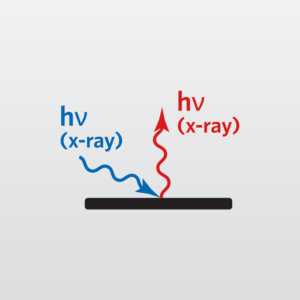Total Reflection X-ray Fluorescence (TXRF)
Home » Our Techniques » Spectroscopy » TXRF
Total Reflection X-ray Fluorescence (TXRF) utilizes extremely low-angle X-ray excitation of a polished wafer surface to obtain the concentration of surface metallic contaminants.
The incident angle of the X-ray beam (typically 0.05-0.5°) is below the critical angle for the substrate and limits excitation to the outermost surface of the sample (~ top 80 Å, depending on the material). The fluorescence signal emitted from the sample is characteristic of the elemental contaminants present.
Surface Sensitivity
The surface sensitivity of TOF-SIMS makes it a good first pass at problem solving to give an overview of what types of species are present on a sample. Other techniques can then be used to obtain additional information. TOF-SIMS is also a technique that can detect species at significantly lower levels than traditional surface analysis techniques such as XPS and Auger.
A highly surface-sensitive technique, TXRF is optimized for analyzing surface metal contamination on semiconductor wafers such as Si, SiC, GaAs or sapphire.

Ideal Uses of Total Reflection X-ray Fluorescence
- Metallic surface contamination on semiconductor wafers
TXRF Strengths
- Trace element analysis
- Survey analysis
- Quantitative
- Non-destructive
- Automated analysis
- Whole wafer analysis (up to 300 mm)
- Can analyze many substrates, e.g. Si, SiC, GaAs, InP, sapphire, glass
TXRF Limitations
- Cannot detect low-Z elements (below Na on periodic chart)
- Polished surface required for best detection limits
TXRF Technical Specifications
- Signal Detected: Fluorescent x-rays from wafer surface
- Elements Detected: Na-U
- Detection Limits: 109 – 1012 at/cm2
- Depth Resolution: 30 – 80 Å (Sampling Depth)
- Imaging/Mapping: Optional
- Lateral Resolution/Probe Size: ~10 mm
Related Resources
Would you like to learn more about using TXRF?
Contact us today for your Total Reflection X-ray Fluorescence (TXRF) needs. Please complete the form below to have an EAG expert contact you.
